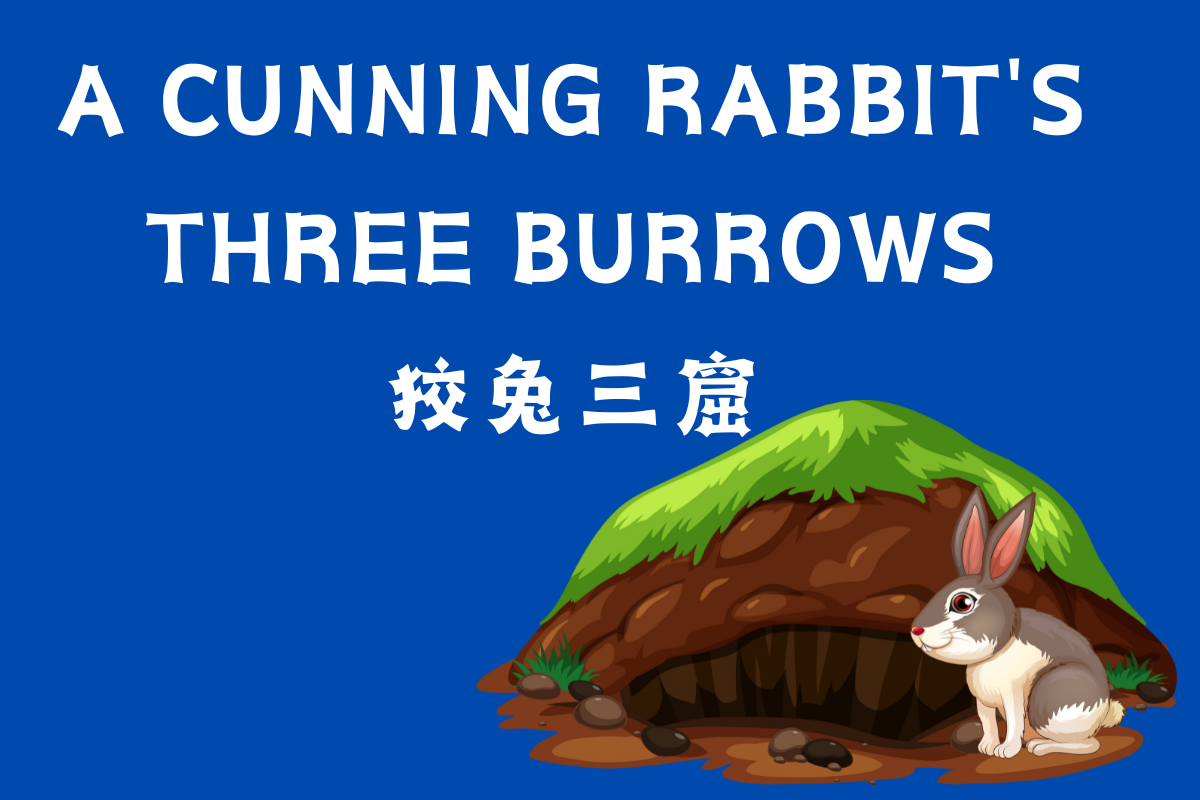A Cunning Rabbit's Three Burrows-狡兔三窟 (jiǎo tù sān kū)
"狡兔三窟" (jiǎo tù sān kū) is a classic Chinese fable that tells the story of a clever hare. The hare lived in a forest, and he was known for his quick thinking and resourcefulness. One day, the hare was chased by a fierce tiger. To escape, he ran into his first hideout, a bush. The tiger couldn't find him, so the hare decided to outsmart the tiger. He claimed that his first hideout was his only one. The tiger, unaware of the hare's cunning nature, left. The hare, now feeling confident, had a second hideout prepared, a hollow tree. However, not long after, the tiger returned, and the hare had to run to his second hideout. The tiger was bewildered, but the hare once again convinced the tiger that this tree was his only 隐匿处 (yǐn nì chù) hideout. The tiger, again fooled, left.
But the hare's real third hideout was a deep hole in the ground. Eventually, the tiger came back and found the hare in the third hideout. This time, the hare couldn't talk his way out of trouble. The tiger caught him, and the clever hare learned a valuable lesson about being too clever for his own good.

隐匿处 (yǐn nì chù), noun, hideout
Examples:
- The spy had a secret hideout in the mountains.
间谍在山里有一个秘密的隐匿处。
Jiàndié zài shān lǐ yǒu yīgè mìmì de yǐnnì chù. - This house is a hideout.
这个房子是一个隐匿处。
Zhège fángzi shì yīgè yǐnnì chù.
The Inspiration (启发 - Qǐfā)
The story of "狡兔三窟" (jiǎo tù sān kū) teaches us that excessive cunning can lead to trouble. It's a reminder that while being resourceful and clever is valuable, there is a fine line between being clever and being deceitful. Sometimes, honesty and straightforwardness are more important virtues. The hare's story inspires us to strike a balance between using our intelligence for good and avoiding manipulative 行为 (xíng wéi) behavior.
行为 (xíng wéi), noun, behavior
Examples:
- Her behavior at the party was polite.
她在派对上的行为彬彬有礼。
Tā zài pàiduì shàng de xíngwéi bīnbīnyǒulǐ. - Good behavior is encouraged in school.
学校鼓励良好的行为。
Xuéxiào gǔlì liánghǎo de xíngwéi.
Modern Application (现代如何运用 - Xiàndài Rúhé Yùnyòng)
The tale of "狡兔三窟" (jiǎo tù sān kū) remains relevant in the modern world. It serves as a cautionary tale about the consequences of deceit and excessive cunning. In today's society, where integrity and honesty are highly valued, the story encourages individuals to use their intelligence for constructive purposes and to maintain transparency in their actions and intentions.
Key Sentences:
- In the business world, honesty is often preferred over "Cunning Rabbit Three Cave" tactics.
在商业世界中,诚实往往优于《狡兔三窟》战术。
Zài shāngyè shìjiè zhōng, chéngshí wǎngwǎng yōuyú "Jiǎo Tù Sān Kū" zhànshù. - She praised his intelligence but cautioned against using it for "Cunning Rabbit Three Cave" purposes.
她赞扬了他的智慧,但警告不要用于《狡兔三窟》般的目的。
Tā zànyángle tā de zhìhuì, dàn jǐnggào bùyào yòng yú "Jiǎo Tù Sān Kū" bān de mùdì. - His elaborate excuses resembled the hare's tricks in "Cunning Rabbit Three Cave."
他的繁琐借口与《狡兔三窟》中的诡计相似。
Tā de fánsuǒ jièkǒu yǔ "Jiǎo Tù Sān Kū" zhōng de guǐjì xiāngsì.